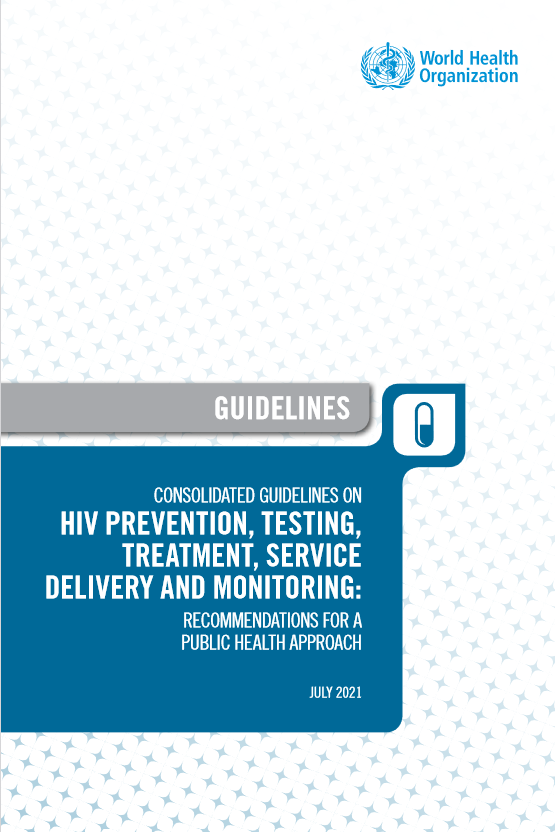2021 WHO Consolidated Guidelines on HIV Prevention, Testing, Treatment, Service Delivery and Monitoring
Analysis of evidentiary value
The World Health Organization (WHO) is the UN’s directing and coordinating authority for health. WHO’s Secretariat serves the organisation’s 194 Member States by implementing the resolutions and decisions of the World Health Assembly through its global and regional headquarters as well as its 150 country offices. The WHO Secretariat derives normative authority from its expertise and political neutrality. It is a widely respected public health authority in the UN system and beyond. Its guidelines and technical reports are authoritative sources of evidence.
Used as precedent
sexual rights
“A package of interventions including screening, treatment and/or prophylaxis for major opportunistic infections, rapid ART initiation and intensified adherence support interventions should be offered to everyone presenting with advanced HIV disease (strong recommendation, moderate-certainty evidence).” (p.xxv)
harm reduction
“Needle and syringe programmes are highly effective in reducing HIV and hepatitis C transmission through injecting drug use. Opioid substitution therapy with methadone or buprenorphine is the most effective form of treatment for opioid dependence and has the additional benefit of effectively reducing HIV transmission through injecting drug use. Opioid substitution therapy is also effective in improving ART uptake and adherence for people dependent on opioids.” (p. 66)
key population and community leadership
“Community engagement and community-based services play an important role in supporting HIV-exposed infant care. These clear and highly context-specific services play a boosting role in supporting facility-focused services and include community-based HIV testing. The engagement of networks of women living with HIV has been effective in several countries and has been used to improve community HIV literacy to create demand, form support groups at the facility and community levels, strengthen linkage to care by escorting newly diagnosed clients to treatment clinics, conducting defaulter tracking and providing active follow-up of mother–infant pairs. In several settings, these interventions led to reduced loss to follow-up among mother–infant pairs.” (p. 96)
“Community-based service delivery, including through peers, has shown to be more effective in many settings, especially where laws criminalize same-gender sex, sex work or drug use.” (p. 346)
“A study among female sex workers in the United Republic of Tanzania found that those receiving community ART initiation were more likely to have started treatment and be retained in care and less likely to have interrupted treatment or feel high levels of internalized stigma.” (p. 355)
“A systematic review and network meta-analysis identified 85 randomized trials of interventions to improve adherence. The review found moderate-certainty evidence that peer counselling results in improved adherence and suppression of viral loads. Peer-based interventions are generally well accepted, especially among adolescents who find that hearing experiences and learning from others facing the same challenges are critical for supporting adherence and engagement in care.” (p. 361)
“Peer-driven models of care have demonstrated impact on improving health-seeking behaviour and HIV treatment outcomes for adolescents living with HIV, such as linkage, adherence to ART, retention in care and viral suppression.” (p. 400)
“Community-led monitoring and related advocacy engenders accountability of service providers and local and national officials to standards of high-quality health care, including the availability and accessibility of services; such accountability leads to improved health outcomes. HIV multilateral donor and normative agencies (PEPFAR, Global Fund to Fight AIDS, Tuberculosis and Malaria, L’Initiative and UNAIDS) have increasingly acknowledged the importance of community-led monitoring and the related advocacy and have required recipient countries to include community-led monitoring in costed workplans.” (p. 419)
universal health coverage
“Global ART coverage for people living with HIV had reached 26 million people as of mid-2020. More than 120 low- and middle-income countries have adopted the “treat-all” policy. Although the median CD4 cell count at the time of ART initiation is increasing, about 25% of people living with HIV continue to present late to care, with low CD4 cell count and associated high early mortality rates, higher direct health-care costs and poor retention in care.” (p. 110)
access to health products
“The lack of access to appropriate antifungal therapies and in vitro diagnostics for rapid detection of histoplasmosis and the co-occurrence of other infectious diseases, especially TB, may affect clinical outcomes and underlie the high mortality of disseminated histoplasmosis among people living with HIV.” (p. 216)
stigma and discrimination
“In HIV care, several studies have shown that people are willing to travel longer distances to consult a health-care provider with a respectful and caring attitude, and negative health-care worker attitudes contribute to loss to care and poor programme outcomes. For key populations in particular, experiencing stigma and discrimination in health-care settings is a structural barrier to accessing services.” (p. 352)
combination prevention
“A global consultation of adolescents and young adults living with HIV was conducted among 388 respondents across 45 countries, supplemented by 10 focus group discussions with 61 adolescents and young adults with HIV across 10 countries. There was near universal agreement (95–98% of respondents) that psychosocial support interventions would help substantially across the HIV cascade and a range of outcomes. Psychosocial support was considered critical to both the mental and physical health of adolescents and young adults living with HIV.” (p. 408)
